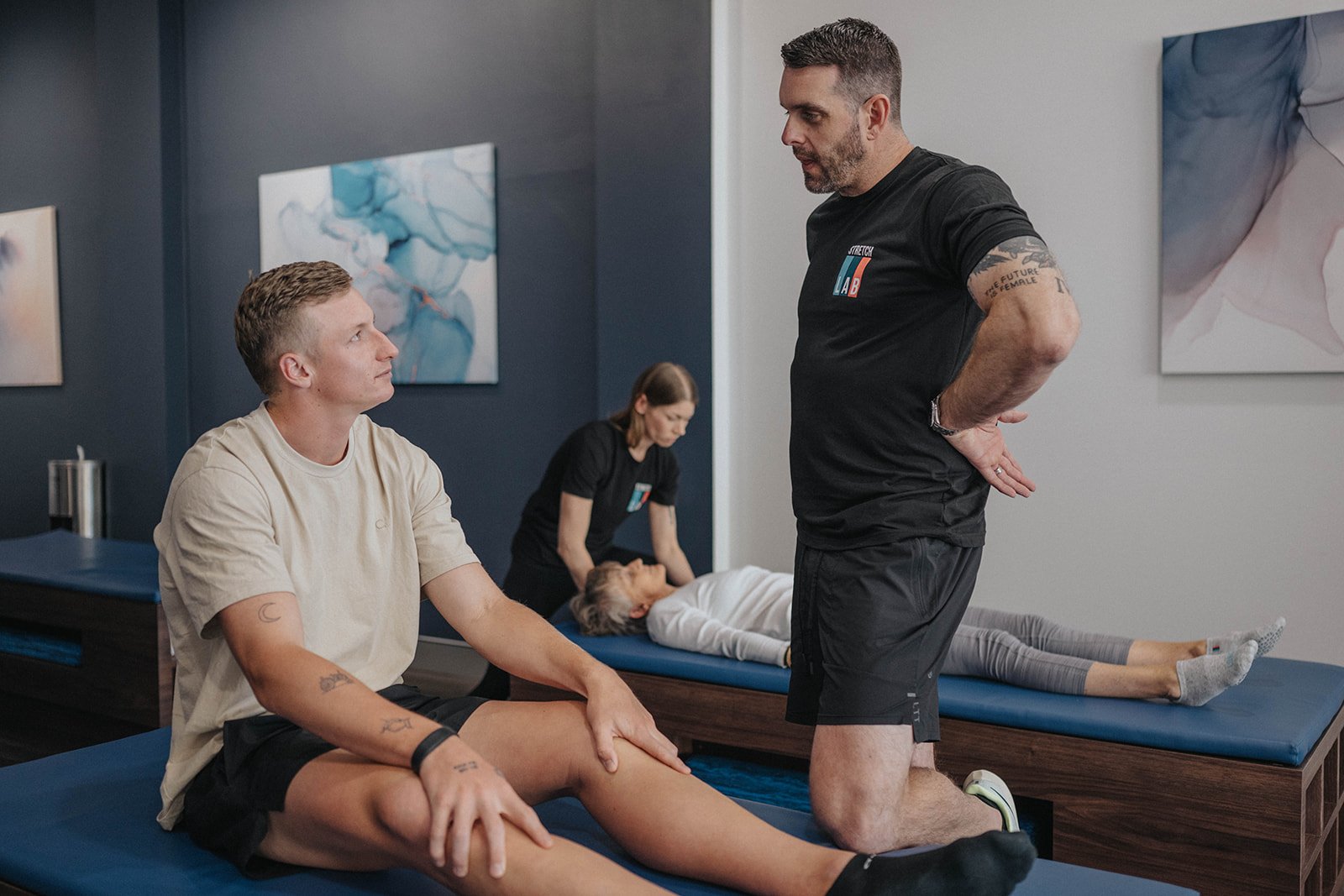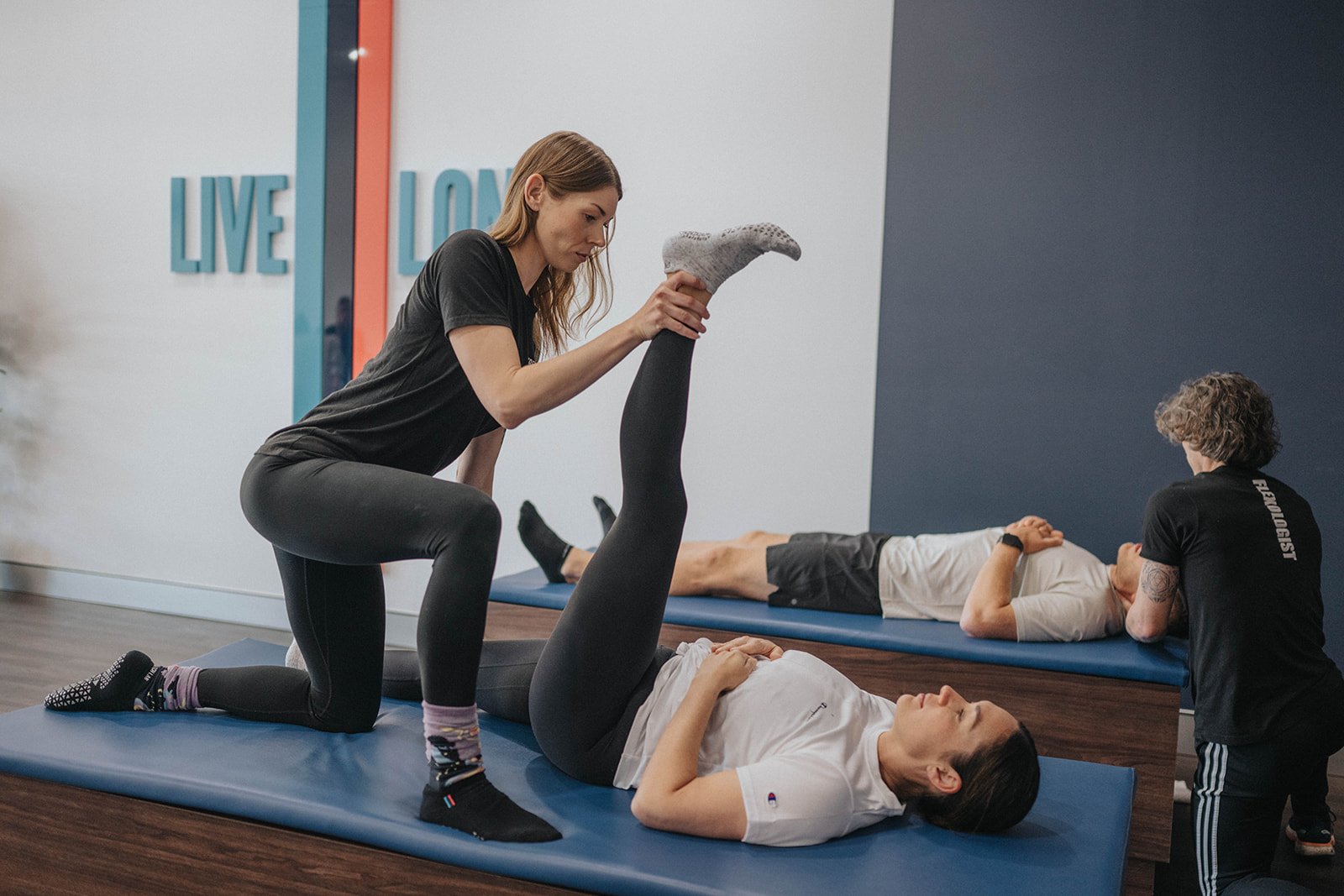When it comes to a balanced and effective workout routine, many of us will focus primarily on cardio exercises, strength training, or specialised workout routines. But if you want to make the most of the benefits of regular exercise, stretching is a crucial step – before and after your routine.
But, stretching is more than just a warm-up or cool-down. It offers a number of benefits in enhancing your overall fitness and well-being. It’s designed to improve flexibility, increase range of motion, and promote better muscle coordination. There’s some great mental benefits too!
In this post, we explore the benefits of stretching and how it completes your fitness routine.
The Importance of Stretching
When muscles are not stretched regularly, they can become tight and short, limiting their ability to fully extend during physical activities. This puts you at risk for joint pain, strains, and muscle damage. That’s why stretching plays an important role in any fitness routine as it helps to keep the muscles flexible and healthy.
Stretching helps target various muscle groups promoting flexibility and improving range of motion. By incorporating stretching exercises into your routine, you not only enhance muscle elasticity but also reduce muscle tension and improve overall posture.
Stretching is not just beneficial for athletes or fitness enthusiasts. It is equally important for individuals who may not prioritize fitness or spend long hours sitting at a desk as it helps counteract the negative benefits of prolonged sitting, such as tight muscles and poor posture.

7 Benefits of Incorporating Stretching into Your Workout
Stretching offers a wide range of benefits that can significantly impact your workout performance and overall fitness level. Let’s take a look at some of the key advantages:
1. Improved Flexibility & Mobility
One of the most talked about benefits of regular stretching is how it can improve flexibility and mobility. When your muscles are tight and cold, your range of motion is limited. This increases the risk of muscle strains and other injuries when you exercise.
However, regular stretching before your workout helps to lengthen and loosen your muscles, allowing them to move more freely. This increased flexibility not only improves your performance during exercises but also makes everyday movements easier and more comfortable.
2. Enhanced Muscle Control & Coordination
Stretching regularly has shown to improve the communication between your muscles and your brain, allowing for better control and coordination of movements. This is especially important for activities that require precision and balance, such as yoga, dance, boxing and martial arts.
3. Increased Circulation & Blood Flow
When you stretch, your blood vessels dilate, allowing more oxygen and nutrients to reach your muscles. This not only helps to reduce muscle soreness and fatigue after your workout but also enhances muscle recovery. Additionally, increased circulation can improve your overall cardiovascular (heart) health and contribute to better endurance during exercise.
4. Stress Relief & Relaxation
Beyond the physical benefits, regular stretching can also have a positive impact on your mental health! For many of us, daily challenges can cause a lot of stress, flooding the body with stress hormones such as cortisone and adrenaline. This stress can be held in the muscles, causing tension and even suppressing immune function.
However, when you stretch, you activate your parasympathetic nervous system, which promotes relaxation. This can help release tension in your muscles, alleviate mental stress, and provide a calming effect on your mind. Incorporating stretching into your routine can be a great way to unwind and relieve stress after a long day.
5. Injury Prevention
Lastly, stretching is a vital component of injury prevention and rehabilitation. By improving flexibility and range of motion, stretching reduces the risk of muscle strains, tears, and other injuries. It also helps to alleviate muscle imbalances and correct postural issues that can lead to chronic pain or injury.
6. Rehabilitation
For individuals recovering from injuries, your muscles and connective tissues may become tight and lose flexibility. Stretching helps to restore range of motion, improve blood circulation, and promote tissue healing. It also prevents the formation of scar tissue, which can restrict movement and lead to further complications.
Different injuries may require specific stretching exercises to aid in the recovery process. For example, individuals with ankle sprains may benefit from stretches that target the calf muscles and Achilles tendon. Those with shoulder injuries may need stretches to improve shoulder mobility and strengthen the surrounding muscles.
* It's important to consult with a healthcare professional or a qualified trainer to receive appropriate stretching recommendations based on your specific injury and recovery goals.
7. Alleviating Chronic Conditions
Stretching can also be beneficial for individuals with chronic conditions, such as arthritis or fibromyalgia. While it may not directly treat the underlying condition, stretching can help alleviate symptoms, such as joint stiffness and muscle pain.
.jpg?width=8256&height=5504&name=128_STRETCHLAB_20220205-_DSC8786%20(1).jpg)
Different Types of Stretching Techniques
No two stretches are the same. By Incorporating various stretching techniques into your workout routine, you can tailor your approach to meet specific fitness goals and needs.
- Static Stretching: This involves holding a stretch in a comfortable position for a prolonged period (typically 15-30 seconds). Static stretching helps improve overall flexibility and is ideal for cooling down after workouts.
- Dynamic Stretching: Dynamic stretching involves moving parts of your body and gradually increasing reach, speed of movement, or both. It is best performed before exercising as it helps warm up muscles and joints, enhances range of motion, and prepares the body for the coming physical activity.
- Proprioceptive Neuromuscular Facilitation (PNF) Stretching: PNF stretching is a technique that combines passive stretching and isometric contractions. It involves contracting a muscle group against resistance, followed by a static stretch of the same muscle group. PNF stretching is often performed with a partner or using props to provide resistance. This type of stretching is highly effective for improving flexibility and increasing the range of motion.
- Active Isolated Stretching (AIS): Active isolated stretching involves actively contracting one muscle group to stretch another muscle group. It focuses on holding each stretch for 1-2 seconds before releasing it. AIS is often used for targeted stretching of specific muscles or for rehabilitation purposes. It helps to improve flexibility, increase blood circulation, and enhance joint mobility.
- Ballistic Stretching: Ballistic stretching involves using momentum and bouncing movements to stretch your muscles. It is a more dynamic and forceful type of stretching that can be beneficial for athletes or individuals involved in activities that require explosive movements. However, caution should be exercised when performing ballistic stretching to avoid overstretching or causing muscle strain.
Read More: Achieving Balance: Effective Stretching Routines for Busy Professionals
.jpg?width=8155&height=5437&name=300_STRETCHLAB_20220205-_DSC9328%20(1).jpg)
Before Or After – When Is The Best Time To Stretch?
Determining the optimal time to stretch depends on your fitness goals and the type of exercise you're planning to perform. However, there are benefits to incorporating a stretching routine both before and after your workout.
Before starting your workout, dynamic stretching is ideal. It helps to warm up muscles, increase blood flow, and improve flexibility and range of motion. Dynamic stretches involve moving parts of your body through a controlled range of motion, preparing your muscles for the activity ahead.
After completing your workout, static stretching can help cool down your body and improve flexibility. Static stretches involve holding a stretch position for a period (typically 15-30 seconds) without movement. By incorporating a stretching routine after your workout you can reduce muscle tension and increase relaxation, reducing muscle stiffness.
Don’t forget flexibility sessions!
For those focusing solely on flexibility, dedicate separate sessions specifically for stretching exercises to target different muscle groups thoroughly. This approach allows for deeper stretches and more extended hold times to enhance overall flexibility.
At Home Stretching Vs Assisted Stretching
When it comes to stretching, there are different approaches you can take depending on your preferences and needs. The easiest is to do your stretching at home. It allows you to create a flexible routine that fits into your schedule, whether it's in the morning, during breaks at work, or before bedtime. You also have the freedom to focus on specific muscle groups and tailor stretches to your comfort level.
However, if you are new to stretching or have specific goals such as improving flexibility for a sport or recovering from an injury, seeking guidance from a trained professional might be beneficial. That’s where assisted stretching studios, like Stretch Lab, come in.
This may include techniques like Proprioceptive Neuromuscular Facilitation (PNF) stretching, where a partner assists in stretching muscles beyond what you could achieve on your own. Assisted stretching sessions can be more intensive and are beneficial for individuals seeking guidance, deeper stretches, correcting imbalances, or recovering from injuries.
%20(1).jpg?width=7780&height=5187&name=166_STRETCHLAB_20220205-_DSC8896%20(2)%20(1).jpg)
Get The Most Out Of Your Fitness Journey
It goes without saying that stretching plays a crucial role in your fitness routine. Not only does it promote flexibility and an improved range of motion, but when performed before and after a workout, reduces the risk of injury and fatigue.
If you're ready to take your flexibility journey to the next level, visit Stretch Lab today! With locations across Australia, we are proud to offer a range of assisted stretching classes designed to help you achieve optimal flexibility, improve mobility, and enhance overall wellness. Our experienced instructors are dedicated to guiding you through stretches to help you achieve your fitness goals. Book your first class today!

.jpg?width=600&name=128_STRETCHLAB_20220205-_DSC8786%20(1).jpg)

.jpg?width=600&name=StretchLab_%20(120).jpg)